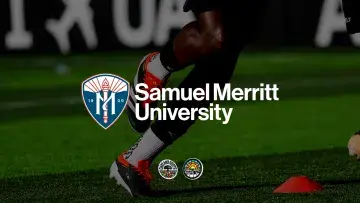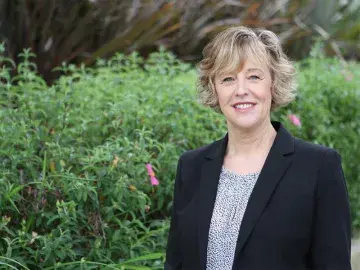Occupational Therapy Students Invent Devices to Improve Quality of Life
We’ve all experienced it at the grocery check-out line: We reach into the nooks and crannies of our wallets to grab the ATM card and either it won’t come out or, instead, it suddenly flies out with a small deck of other credit cards, club membership cards, library cards – and then everything is spilled onto the ground.
Occupational Therapy (OT) student Ravi Amarawansa has a solution.
The Will-Let: The wallet that will let you do it. 
It’s an accordion-style wallet that keeps the credit cards attached to an elastic string and reels the card back into place after you’ve slid it through the check-out line ATM. (For a close up pic, click here.)
“No one likes to fumble around with a stack of cards,” said Amarawansa, pictured at right. “Now imagine if you’re a person who’s challenged by fine motor skills. The simple task of reaching into your wallet can turn into a difficult experience.”
Amarawansa’s invention was just one of many on display at the annual Assistive Device Faire in March, which shows off creations from OT students who’ve taken the course, “Occupational Adaptations and Introduction to Modalities.”
“I believe the projects reflect an essential function of occupational therapy – to identify ways to assist people with impairment or disability to fully participate in life,” said assistant professor Ginny Gibson OTD, OTR/L, CHT.
To help their future clients, the OT students at Samuel Merritt University (SMU) glue-gunned, drilled, taped, and staple-gunned a small store’s worth of homemade inventions.
Jessica Callaway and Cristina Pompa (pictured below) created the “Ostomy Clean Clip,” an easy-to-use Chip Clip-looking device for clients who need to empty their colostomy bags several times a day. The student’s clip slides, opens, and locks easily for impaired clients who have limited strength or motion in their hands.
 Caregivers will also appreciate the invention, Pompa said, because it will help reduce accidental leakage and spills. (For a close up picture of the clip, click here)
Caregivers will also appreciate the invention, Pompa said, because it will help reduce accidental leakage and spills. (For a close up picture of the clip, click here)
“We’re always trying to promote independence of our clients,” Pompa said. “This clip will help them improve their daily lives and give them confidence.”
Jen Hsu and Kaitlin Riray invented the “Pinwrist,” a rolling pin for clients who may have reduced strength in their hands and can’t the motion to flatten dough.
The device allows the user to slip their hands through rings at the ends of the rolling pin so their wrists and forearms create the leverage to roll the pin. The pair made the invention using a rolling pin, PUC foam board, craft foam, a glue gun, and an anti-slip pad.
“Cooking during the holidays is something people love to do,” Hsu said. “We wanted to make something that allowed our clients to continue doing what they love.”
Student Sarah Hoover was inspired to create an invention for her next door neighbor. The young girl, Hoover said, has one hand and wanted to French braid her own hair.
So Hoover used a wooden rod, a Velcro strap, wire, and “a lot of hot glue,” to create the “Braid-Me-Able,” a one-handed braiding device. Hoover said her neighbor tested the prototype and gave valuable feedback until it worked properly.
“She can dance, sew, and rock climb,” Hoover said, “but the one thing she couldn’t do was braid her own hair. Being able to live the life you want and participate in meaningful activities is a really important to quality of life.”
For more photos and devices, check out our Flickr album


